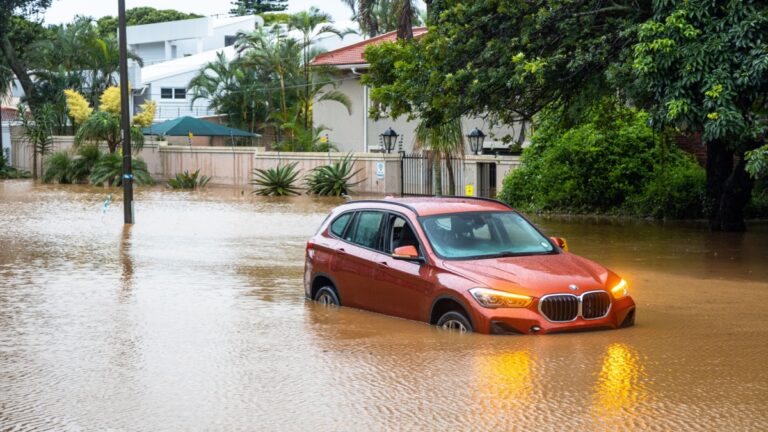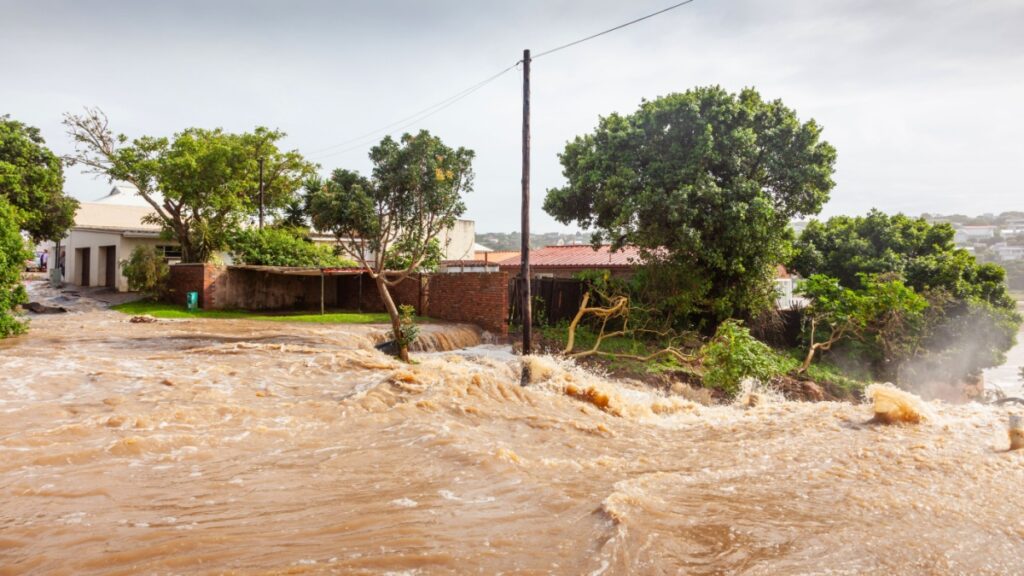
South Africa’s growing insurance protection gap is leaving individuals, businesses, and the government financially exposed to climate disasters.
PSG Insure CEO Cedric Masondo said, unlike in some other European countries that are prone to natural disasters, South Africa does not have a dedicated Natural Disaster Pool.
This is different from manmade disasters, such as civil unrest and terrorism, which are covered by the South African Special Risk Insurance Association (Sasria).
This means that in cases like the recent Mthatha flooding, where over 100 lives have been lost, thousands displaced, and roads and public infrastructure washed away, there is a coverage gap.
As a result, Masondo said the taxpayer will inevitably be liable to pay for the damages. Unfortunately, most homes and infrastructure that have been destroyed will not be rebuilt due to financial shortages.
“This is the essence and core of South Africa’s growing insurance protection gap – the widening divide between the economic losses that are insured and the total losses suffered,” he said.
“It’s a structural risk that affects everyone: individuals, businesses, public institutions and the economy at large.”
Masondo explained that the insurance protection gap has been widening globally in the last decade, specifically in South Africa.
“There are three key reasons why the insurance protection gap is widening – and why it’s likely to continue doing so if we don’t act decisively,” he said.
First is the issue of affordability, as, with high costs of living, poverty, inequality, and persistent unemployment, insurance often becomes a luxury.
Masondo said that many households cannot afford insurance, so they are financially exposed when disaster strikes. This mainly includes people living in the informal sector or rural areas.
“In some cases, their houses are built in low-lying areas, which makes them vulnerable to natural disasters,” he said.
Secondly, Masondo explained that there is an issue around financial literacy and a lack of demand. In most cases, the right type of insurance product is available and appropriately priced, meaning clients can afford it.
“However, financial literacy and the appreciation of insurance may drive people and businesses not to purchase insurance, and when disaster strikes, they find themselves uninsured,” he said.
Changing risks

Finally, he mentioned the issue of insurability. This is a problem because the nature of the risks has changed over the past few years.
Santam’s Insurance Barometer for 2025 explained that a decade ago, insured losses from global natural disasters rarely exceeded $100 billion in a year. Today, that level of loss is common and expected.
Events usually considered once-in-a-century now happen roughly every 20 years, with a major catastrophe taking place every three to five years.
“Climate change has made natural disasters more frequent and more severe,” Masondo said. “Floods like those in Mthatha and the 2022 KZN deluge have become the norm, not the exception.”
This means insurers and reinsurers are no longer prepared to offer cover for some areas, especially low-lying regions.
“The problem of climate change is not only floods. We have also seen extreme drought. Drought insurance cover for farmers, especially small and emerging commercial farmers, is not easily available,” he said.
With climate change, unless we implement proper risk mitigation and risk finance solutions, most places along the coast could become uninsurable, and the number of perils excluded from insurance policies will increase.
In all these cases, the government is expected to provide financial support, which places an additional financial burden on already strained government coffers.
Changes needed

Masondo explained that the current model of disaster relief is largely reactive. The government declares a state of emergency, releases funding, and begins a slow rebuilding process.
“But it’s inconsistent, unpredictable and, most importantly, unsustainable.” He said South Africa does not have a risk-financial solution to handle these natural disasters.
Events like the flooding in Mthatha expose just how underprepared the country is for systemic climate risks.
“Emergency response alone is not enough. We need to shift towards a proactive, pre-funded model that distributes risk across public and private actors – and gets financial support into communities before losses get out of hand,” he said.
According to Masondo, one of the most effective solutions would be establishing a national catastrophe risk pool focused explicitly on natural disasters.
“We already have a precedent: SASRIA, which covers strikes, riots and unrest – risks the private sector cannot underwrite alone. SASRIA works because it’s a collective, state-supported mechanism that gives the market scale and resilience,” he said.
“We need a similar model for climate-driven disasters. A dedicated CAT pool could aggregate risk, enable broader coverage, and ensure faster payouts when floods or droughts occur.”
Masondo said it could also take pressure off national disaster relief funds, which are often depleted or delayed.
“Importantly, such a pool should not be viewed as a bailout mechanism for uninsured losses or replacing the private sector,” he explained.
“Rather, it would complement the conventional insurance companies and offer affordable solutions where a gap exists.”
For this solution to be effective, Masondo stressed that there needs to be coordinated public-private partnerships.
The government must lead in establishing a CAT pool, and the private sector needs to contribute its technical expertise, underwriting capacity, claims infrastructure and risk knowledge.
He said other countries have shown what’s possible. In the United Kingdom, France, and Spain, the Natural Disaster Pool provides affordable coverage to homeowners in high-risk areas, complements private insurers, and closes the protection gap.
In Japan, the government reinsures earthquake insurance liabilities underwritten by private insurers.
“We don’t need to copy these models exactly – South Africa has its own challenges and market dynamics to consider – but we can take valuable lessons from them about what works and what does not,” he said.
“The bottom line is that insurance works best when it is systematised and scaled. The individual, out-of-pocket model is not fit for this era of climate catastrophe.”
